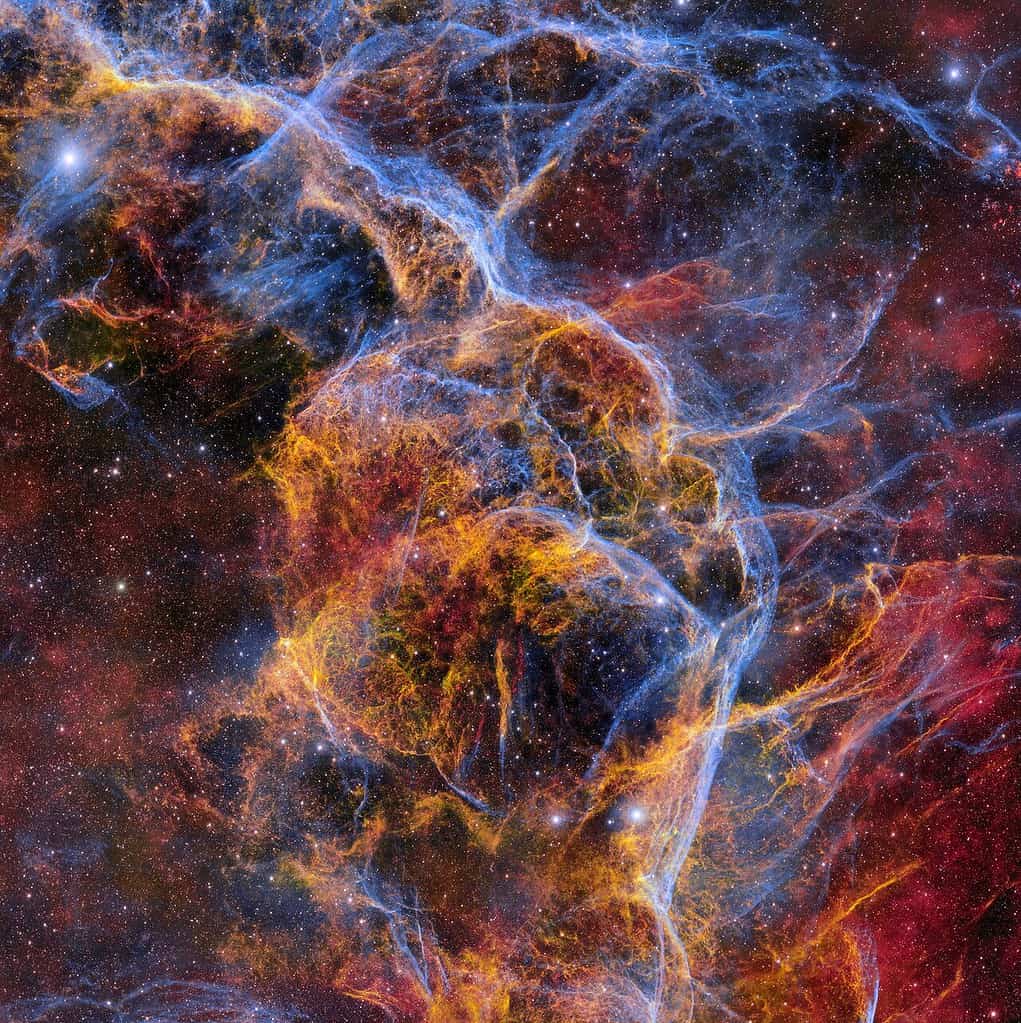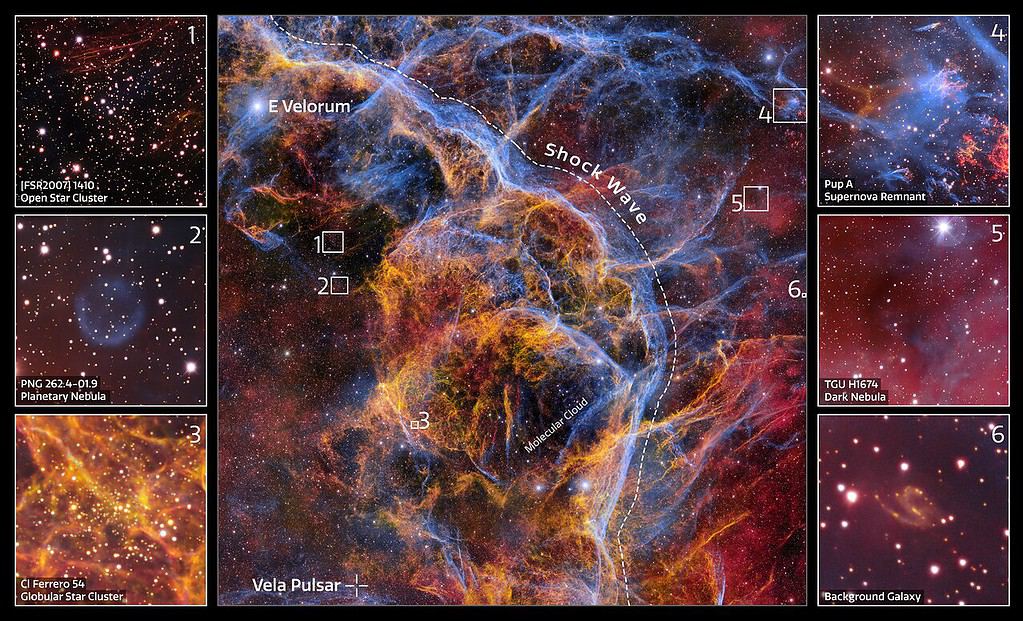Some space images have become timeless icons of our exploration of the cosmos. Take the famous photo of the Pillars of Creation, or Hubble’s Deep Field Image, for instance — this colorful image of the Vela Supernova Remnant can stand with the best of them.
This wispy web of glowing gas is the Vela Supernova Remnant, the expanding debris field from a star that exploded approximately 11,000 years ago.

Supernova goes boom
The Vela Supernova Remnant lies some 800 light years away from us and is one of the closest such remnants to Earth. It is what’s left behind by a supernova, one of the largest and most destructive phenomena in the known universe. In this type of eruption, a star violently ejects its outer layers while its core collapses, forming a dense neutron star remnant. In the case of Vela, this took place some 11,000 years ago, when humans were just settling down and starting to build settlements.
When the star erupted, it released a massive shockwave that left behind a similarly massive trail as it passed through all the matter in its path. To get a sense of just how enormous this structure is, it’s a whopping 100 light-years across. Even though it’s so far away, it appears in our night sky with a diameter 20 times bigger than the moon. So, what we have here is the huge trail left behind by an explosion of cosmic scale.
The explosion left behind these vividly colored filaments of hot, pressurized gas. But it also gave birth to something extraordinary: a neutron star. In fact, these researchers call this type of star a “zombie star”.
A star’s legacy

What remains of the original star is no ordinary object. The stellar core collapsed into a neutron star—an incredibly dense remnant with the mass of our Sun packed into a sphere just a few kilometers across. To put its density into perspective, a single teaspoon of neutron star material would weigh 10 million tons.
This particular neutron star is a pulsar — a highly magnetized, rotating star that emits beams of electromagnetic radiation from its magnetic poles. The Vela Pulsar, located in the lower-left corner of the image, is an even more fascinating find. This neutron star is a pulsar—a rapidly spinning, magnetized object that emits beams of electromagnetic radiation. The Vela Pulsar spins 11 times per second, showcasing the dramatic aftermath of the supernova that birthed it.
Dark energy camera
The image was taken with the Dark Energy Camera (DECam), one of the best wide-field imaging instruments available to astronomers. Designed to capture extremely detailed images of distant celestial objects, the DECam boasts a 570-megapixel sensor and an impressive field of view, making it ideal for mapping vast regions of the night sky. The camera is mounted on the US National Science Foundation’s Victor M. Blanco Telescope, a 4-meter-class telescope located at the Cerro Tololo Inter-American Observatory in Chile. Perched high in the Andes at an altitude of 2,200 meters (7,200 feet), this observatory provides a pristine, dark-sky environment, essential for capturing such crisp and vivid images of distant cosmic phenomena.
The different colors in the image were created by filters on the camera. Each filter collects a specific color of light. Astronomers took multiple photos thusly and then overlaid them on top of each other. This results in a huge and very detailed photo; in fact, this is the largest DECam photo, at 1.3 gigapixels. For comparison, that’s 1300 megapixels, and the average smartphone camera has between 12 and 48 megapixels.
The colors in the image are not just for show—they help scientists study the dynamics of the explosion, the life cycle of stars, and the formation of neutron stars and pulsars. More than just a beautiful picture, this image provides invaluable insights into the universe’s evolution and composition.
Like the Hubble Deep Field and Pillars of Creation, this image of the Vela Supernova Remnant inspires awe and reminds us of the vast, dynamic cosmos we inhabit.









